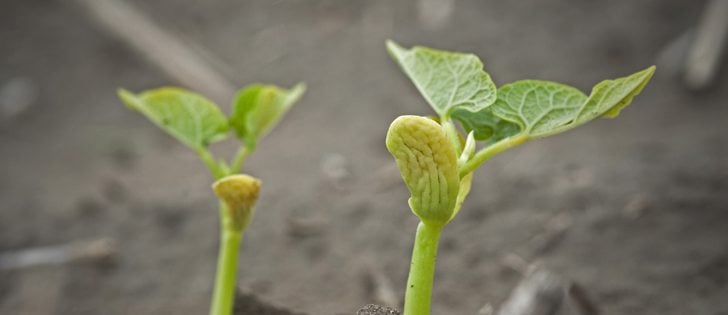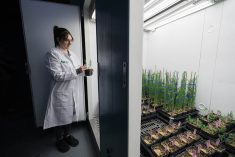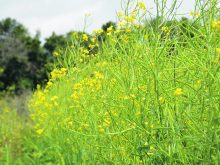For decades, scientists and crop protection companies have employed a straightforward approach to fight weeds, diseases and insects.
Step one: find a chemical that controls a particular pest in a crop.
Step two: convince farmers to spray the chemical on the crop.
While chemistry remains the go-to solution for crop protection, a different form of chemistry might be the future of pest control.
Scientists have shown that plants can communicate with other plants and can sense their surroundings using chemical signals. Those chemicals are released or absorbed when there are changes in environmental conditions or threats to the plant.
Read Also

Farming Smarter receives financial boost from Alberta government for potato research
Farming Smarter near Lethbridge got a boost to its research equipment, thanks to the Alberta government’s increase in funding for research associations.
“Plants are giving off signals all the time…. Plants communicate with chemicals…. If we had noses like dogs, maybe we could (sense) it,” said Jim Westwood, a professor in the department of plant pathology and weed science at Virginia Tech, based in Blacksburg, Virginia.
“(For example) a bug starts chewing on the leaf of one plant. That plant will then give off a (chemical) signal… that will alert nearby plants that there’s a herbivore in the area.”
The idea that plants communicate to other plants and other species was a fringe area of science until the 2000s. But many experts now believe that plants can send and receive signals in multiple ways, including chemicals emitted into the air and soil, or underground signals via networks of fungi.
“In the last 15 years, the idea that plants are communicating has become much more accepted,” Richard Karban, an evolutionary ecologist at the University of California, Davis, told The Scientist media outlet. “The evidence for that is now substantial and it’s exciting to unravel all these different realms of plant communication.”
Jared Ali, an entomologist at Penn State university, said chemical ecology is the term used to describe a broad field that includes plant communication. The term is an amalgam of two fields of science.
Ecology is the study of interactions in the natural world, such as increases in the population of prey species like deer when the population of wolves declines.
“Chemical ecology introduces signalling to that paradigm,” said Ali, a member of the Center for Chemical Ecology at Penn State. “(There are) signals that play a vital role in how organisms communicate and interact.”
One example from agriculture is an insect eating a plant leaf. In certain cases, the plant will discharge a chemical lure to attract insect predators that feed on the pest.
Modern crops are still capable of such chemical signals but the natural ability has eroded due to plant breeding and because monoculture crops are un-natural, Ali said.
“A lot of the defences that a plant might have in the wild gets lost in a domesticated plant,” he said. “There are these (natural) mechanisms that plants can repel things through odours, or defend themselves, that we’ve lost. We’re trying to re-establish what (plants) used to do.”
Scientists who specialize in chemical ecology, like Ali and Westwood, are pursuing two research objectives:
- recognizing the communication between plants, insects and pathogens and what the signals do
- manipulating the signals to protect crops from weeds, insects and diseases
Clarence Swanton, a University of Guelph weed scientist, has recently discovered a form of communication between plants and weeds. Swanton learned that corn seeds can sense when weeds are growing above ground. Sunlight reflected by the weeds penetrates the soil surface and the seeds detect the reflected light. The seeds respond by delaying germination, which often causes yield loss.
“You might be able to engineer or select out that response. So… whether the competitor (weed) is there or not, the plant is going to put all of its energy into growth and reproduction,” Westwood said. “That’s the big goal… to understand all the complexities of the ecological interactions and do what you can to manipulate those.”
One practical application is spraying a crop with a pheromone to disrupt insect reproduction. Ali said this has been done with moths to “blind them” so they can’t detect mates, which drives down the moth population.
“That’s insect-to-insect based,” Ali said. “There’s some work being done looking at how plants, when they’re damaged, release chemicals (that) attract predators…. People have been (trying) to re-arrange the genes that release that signal. Or put out (chemical) lures to… attract beneficial (insects).”
Using these sorts of bio-chemical tools for crop protection may offer benefits to agriculture. It could reduce dependence on pesticides and the environmental impact of farming.
As well, resistance to pesticides is usually inevitable so farmers need alternative solutions.
“From my own weed science point of view, we’ve got herbicide resistance all over the place and new chemistries do nothing but kick that can down the road a little bit,” Westwood said. “We need new ideas and I think that comes from biology.”
However, growers will need conventional pesticides for years because chemical ecology isn’t ready for prime time. Scientists need to understand how the chemical signals work before they can develop commercial products or strategies.
“It’s still long term, in my view. More than 10 years,” Westwood said.
Getting there will require more people and more money.
Ali said there are positive signs, as the phrase “chemical ecology” is appearing in more grant applications and universities are hiring more people with an interest in the field.
Westwood and Ali might believe that chemical ecology is on the ascent, but an Agriculture Canada scientist isn’t so sure.
Gary Judd, an entomologist in Summerland, B.C., said the field of research has shrunk in Canada.
“I would say chemical ecology is (now) on the decline, in terms of the number of scientists working in the field,” he said.
“When I was a grad student 30 years ago, there were far more students in chemical ecology than there are now.”
Simon Fraser University has a group of specialists in chemical ecology and there are a few researchers at the University of Alberta, but there’s not much else in Canada, Judd said.
Part of the challenge is a lack of funding. Research priorities and dollars for crop protection have shifted elsewhere.
“All the funding in the last 15 to 20 years is going to genomics,” Judd said. “We’re going to control everything through genetic modification. There’s a lot of promise there…. (But) chemical ecology is losing ground to that sort of funding.”


















